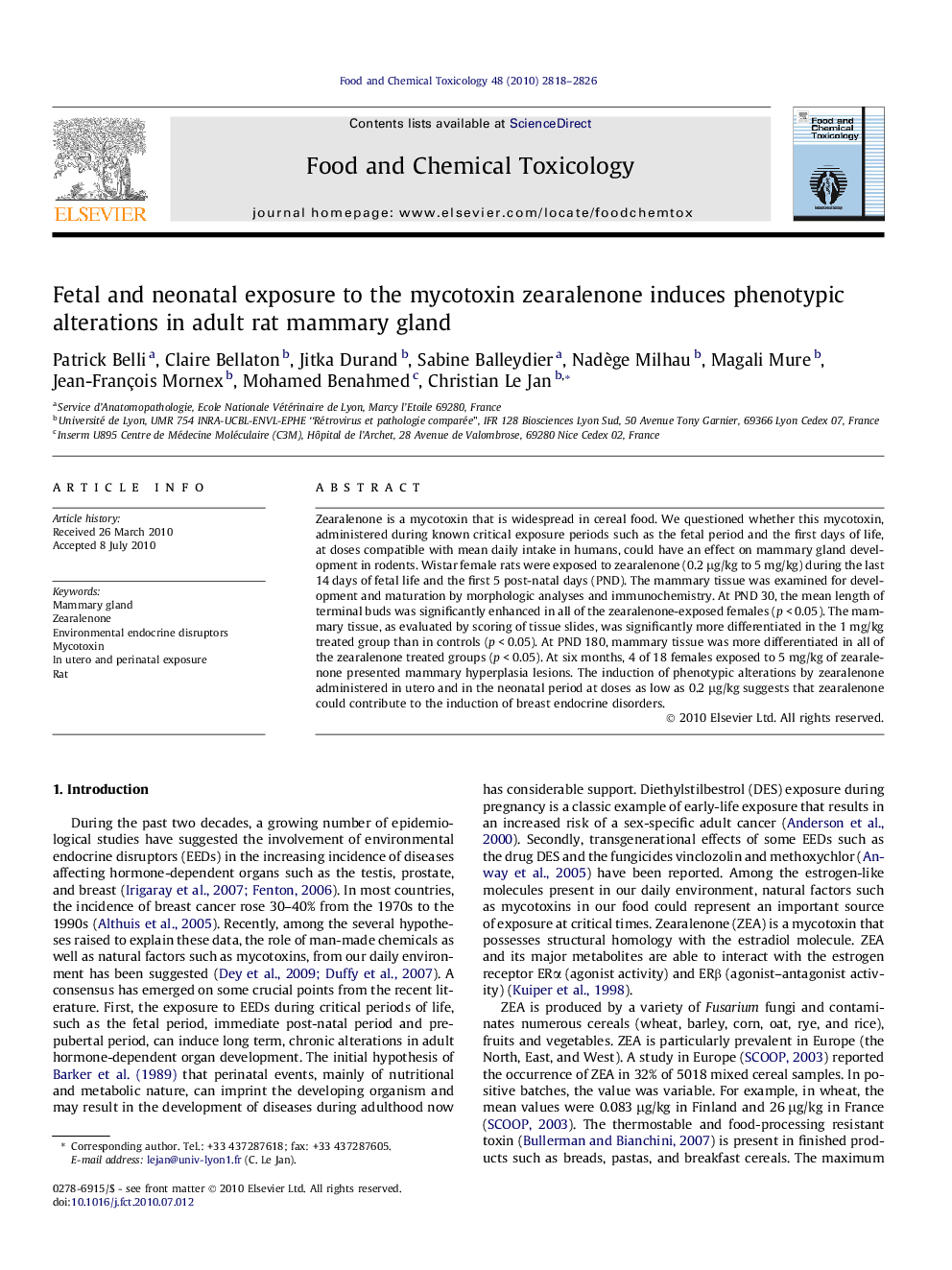| Article ID | Journal | Published Year | Pages | File Type |
|---|---|---|---|---|
| 2585595 | Food and Chemical Toxicology | 2010 | 9 Pages |
Zearalenone is a mycotoxin that is widespread in cereal food. We questioned whether this mycotoxin, administered during known critical exposure periods such as the fetal period and the first days of life, at doses compatible with mean daily intake in humans, could have an effect on mammary gland development in rodents. Wistar female rats were exposed to zearalenone (0.2 μg/kg to 5 mg/kg) during the last 14 days of fetal life and the first 5 post-natal days (PND). The mammary tissue was examined for development and maturation by morphologic analyses and immunochemistry. At PND 30, the mean length of terminal buds was significantly enhanced in all of the zearalenone-exposed females (p < 0.05). The mammary tissue, as evaluated by scoring of tissue slides, was significantly more differentiated in the 1 mg/kg treated group than in controls (p < 0.05). At PND 180, mammary tissue was more differentiated in all of the zearalenone treated groups (p < 0.05). At six months, 4 of 18 females exposed to 5 mg/kg of zearalenone presented mammary hyperplasia lesions. The induction of phenotypic alterations by zearalenone administered in utero and in the neonatal period at doses as low as 0.2 μg/kg suggests that zearalenone could contribute to the induction of breast endocrine disorders.
